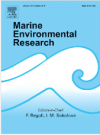
Over the past decades, the world's oceans and seas have been influenced by several human induced impacts, including climate change. Understanding the impacts of this changing environmental condition in zooplankton communities is crucial, as alterations in the zooplankton communities can affect entire marine ecosystems. Here, we focus on the potential effects of an increase in temperature on the calanoid copepod species, Temora longicornis, the dominant zooplankton species of the southern part of the North Sea. We sequenced the transcriptome (using RNA-seq technology) in T. longicornis, after being exposed to thermal stress, to investigate gene expression differences as a response to temperature fluctuations.